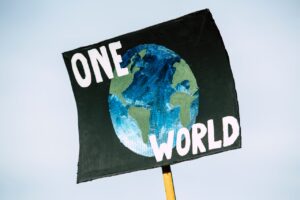Peace Agreement Between Rival Nations Signed, Making It a Historic Event

Peace Agreement Between Rival Nations Signed, Making It a Historic Event
Following decades of political animosity, military standoffs, and economic sanctions, two countries that have been deeply separated by these factors have finally signed a historic peace deal. This momentous event has captivated the attention of people all across the world. This victory, which has been heralded as a turning point for the stability of the area, was the culmination of months of high-stakes discussions, secret diplomacy, and extraordinary sacrifices on both sides. In addition to laying the framework for economic cooperation, cultural interaction, and a shared vision for a more secure future, the pact not only promises to put an end to years of open war, but it also pledges to end the conflict. This signing has been praised as a rare and strong symbol of reconciliation in a world that is becoming more divided. World leaders, human rights campaigners, and individuals from both nations have all expressed their satisfaction with the signing.
1. Decades of Conflict and Tension in the World
There has been a lengthy history of political disagreements, border conflicts, and distrust between the two organizations. Numerous generations have been raised under the shadow of animosity, and diplomatic connections have been almost nonexistent for a considerable amount of time.
2. The Crucial Moment in the Course of Negotiations
There have been a number of recent occurrences, such as economic constraints, political changes, and changing global alignments, that analysts believe have cleared the ground for resumed discussions. Confidential backchannel discussions were crucial in establishing confidence prior to the commencement of official talks.
3. The Function of International Mediators in the Conflict
The facilitation of negotiations, the provision of safe meeting sites, and the guarantee that all parties had an equal voice in the process were all accomplished with the assistance of neutral nations and reputable international organizations to a significant degree.
4. Important Provisions of the Agreement
A mutual ceasefire, the demilitarization of disputed regions, the reopening of commercial routes, and the establishing of joint committees to supervise the execution of the accord are all included in the treaty which was signed between the two parties.
5. Security Guarantees and Measures to Build Trust in the Organization
The two countries reached an agreement to progressively decrease the military presence along their shared border and to let third-party monitors to check compliance. This will help to develop trust in the accord’s potential to be maintained over time.
6. Opportunities for Economic Growth That Peace Creates
As a result of the elimination of trade obstacles, it is anticipated that enterprises from both nations would be able to take advantage of new markets, infrastructure projects, and possibilities for investment across international borders.
7. The Reunification of Families and the Impact on Humanitarian Situations
Families were kept apart for decades due to the political split that existed. Among the stipulations of the agreement are those that facilitate simpler travel, initiatives that promote cultural interaction, and family reunion.
8. The Role of Cultural Diplomacy in the Healer Community
In an effort to promote mutual understanding and lessen the impact of deeply ingrained biases, there are plans to hold joint cultural festivals, educational exchanges, and sporting competitions.
9. Responses from International Organizations and Communities
Global powers have expressed their satisfaction with the deal and have offered their support in the form of political backing, help with development, and technical assistance.
10. Skepticism and the Possibility of Obstacles in the Future
Experts warn that political groups, economic differences, and persistent distrust might endanger the durability of the pact if it is not properly handled. Despite the fact that hope is high, this is a warning not to be taken lightly.
11. The Function of Civil Society in the Maintenance of Peace
It is anticipated that local community leaders, non-governmental organizations (NGOs), and activists would play a significant role in fostering debate, guaranteeing inclusion, and resolving issues at the grassroots level.
12. Lessons for Other Geographical Areas of Conflict
The strength of compromise and continuous diplomacy is being highlighted by the fact that this deal is already being analyzed as a model for settling other long-standing problems throughout the globe.
13. The Following Implementation Steps to Take
An immediate cessation of hostilities, the establishment of monitoring committees, and the writing of new accords covering commerce, education, and climate cooperation are all things that both parties have agreed to doing.
14. An Important Historical Moment for the Generations to Come
For the first time in decades, young people in both countries may look forward to a future that is free from the ever-present danger of conflict, with chances for personal development, travel, and mutual understanding.
15. An outlook that is cautious yet optimistic
This deal is a major step forward, one that has the potential to reshape not just two countries, but an entire region, for centuries to come. Although the route to enduring peace is seldom simple, this agreement marks a significant stride ahead.







